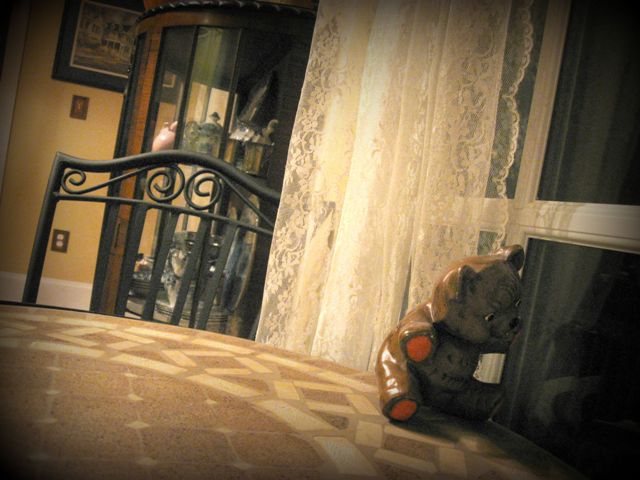The Secret Life of the Lonely Doll: The Search for Dare Wright
Reviewing the story of a lonely doll in search of friends, The Secret Life of The Lonely Doll: The Search for Dare Wright uncovers the secrets of the author of The Lonely Doll hidden in the text of her biggest seller.
The life of Dare Wright did not quite fit the stereotype of adolescent euphoria developed for children’s story writers. In fact, it was far from. She did not have a perfect, fit-for-the-movies relationship with her parents, she did not have friends knocking at her door every evening, and she certainly did not have cookies and milk to come home to every day after school. Jean Nathan has a story to tell, proving the assumptions otherwise as she writes The Secret Life of The Lonely Doll: The Search for Dare Wright.
For those who grew up in the time era of The Lonely Doll, it was probably a childhood favorite. Written by the stunning, talented photographer/model/actress Dare Wright, the pink and white checkered novel was flying off the shelves faster than they could be restocked. The cover shows a shapely felt Lenci Doll from the 1920s, which belonged to Dare herself as a child, and attracted young women and children of the 1950’s and 60’s to open the paperback and delve into the story of, well, a lonely doll. Little doll Edith, named after Dare’s mother, lives alone in a mansion with everything she wanted, except for true friends. Following the benevolent story line of every classic, her luck gears up and she stumbles upon a set of stuffed bears. All in all, the bears end up adopting Edith into their odd family, Mr. Bear and Little Bear becoming fatherly and brotherly figures in her life. One day, when Mr. Bear steps out for a casual stroll, he returns upon the sight of Edith all dressed up in adult clothing with Little Bear at her side. Red lipstick is painted on her lips and smeared across their mirror, reading “Mr. Bear is just a silly old thing!” Mr. Bear proceeds to physically discipline both Edith and Little Bear, leaving Edith scared that he might decide to take up Little Bear and leave her all alone again. Realizing the young dolls worried stature, he promises Edith that he and Little Bear will never, ever leave her.
Now, as a young child, this story satisfies the subconscious fear of abandonment, and does deliver the necessary message of unconditional love. However, as an adult, the content is borderline inappropriate and unquestionably creepy, bringing up inevitable questions: what is the reason behind the doll’s possessive phobia of solitude? How has Mr. Bear become so unhealthily infatuated with this ‘new friend’ in a matter of pages? Where did the doll get access to adult clothing and make up for that matter? And most hauntingly, why does the doll have such an uncanny resemblance to Dare Wright herself? The realizations make you wonder what else you missed as a child.
Unfortunately, there is a bigger picture behind the story of Edith the doll, a story left foggy until decoded by Jean Nathan. As a child, Dare actually lived as far away from a perfect childhood as you can get. With her famous portrait-painting mother and socially high-class father’s marriage being deemed as perfect, ‘the union of two young, beautiful people with their heads on straight’, no one would’ve expected such a sudden separation. After the birth of their two children, Blaine and Dare, Mr. Wright developed a controlling drinking problem and soon struggled to stay in work. After attempting to bunk with relatives all around the northeastern states, they decided an informal split to be best for their situation. Mr. Wright took the older son, Blaine, and Edith obtained custody over young Dare.
Given the struggle they faced in their earliest years together, no one could blame the girls as they developed an unbreakable connection that lasted for years and was sometimes viewed as more than a mother-daughter relationship, or in some situations, less. Edith was never a nominee for “Mother of the Year” award, as she often forced her daughter to sit and listen to her malevolent rants– which Dare much preferred over the days when not a word was spoken between the two. Dare’s controlling fear of separation with her mother kept her home from school months on end, and even pestered her social life all the way through boarding school. It simply blocked her mentally from anything but moping in her loneliness and writing poetry to her ‘precious mother’.
After boarding school, Dare returned to live with her mother, much to Edith’s delight. As Dare grew older and her appearance did too, mother realized what a beautiful girl she had on her hands and decided she must take precaution to keep her safe from the sexually-driven world. Edith continued to dominate Dare’s life, making her the idol of her photography and paintings, and protecting her from any vanity except for nude photos Dare posed for to please her mother’s whims. The two were said to have actually slept in the same bed until the death of the mother.
Jean Nathan does a fabulous job sharing Dare’s story in consideration and moderation, stating the facts as they were and nothing less. If you are fascinated by what lies beyond the frilly pink and stunning photography found in The Lonely Doll, read The Secret Life of The Lonely Doll: The Search for Dare Wright as it captivates an intriguing story as well as your attention.

Natalie Wilson is a senior at North Forsyth High School and a fourth-year journalism student. Though she is eager to depart on her own life adventure,...


